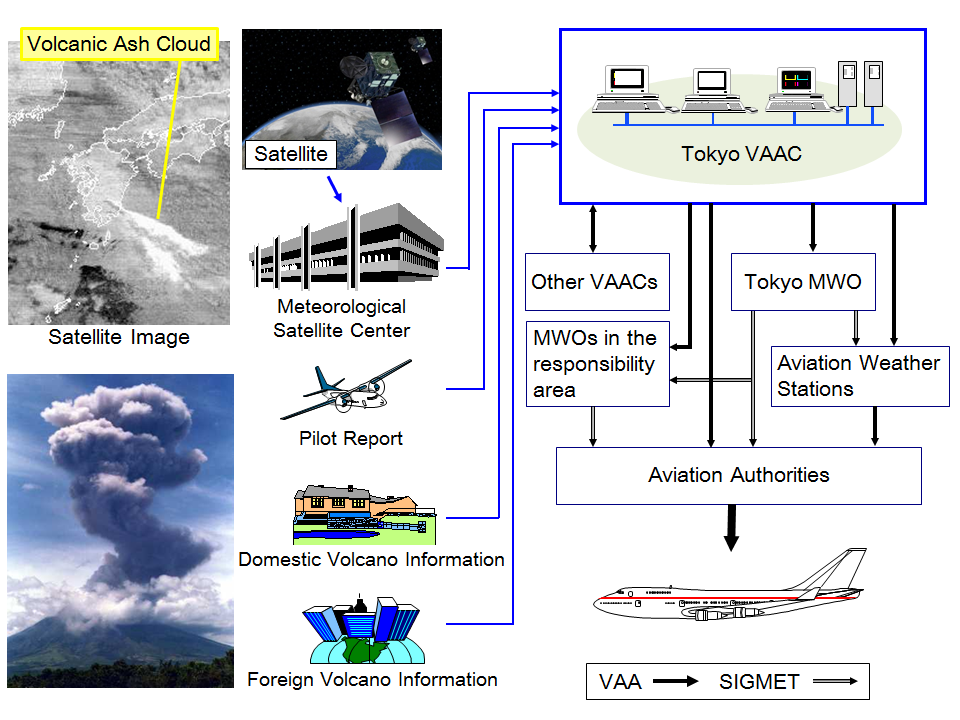INFO4DISASTER PAGES
Info4 Volcanic eruptions
World Map of Volcanoes, Earthquakes, Impact Craters, and Plate Tectonics | ||
 |
This site supports and extends a 1x1.5 m wall map available through the "Order" link [above]. |
| | |||
|
| |||
Volcano
A volcano is a mountain that opens downward to a reservoir of molten rock below the surface of the earth. Unlike most mountains, which are pushed up from below, volcanoes are built up by an accumulation of their own eruptive products. When pressure from gases within the molten rock becomes too great, an eruption occurs. Eruptions can be quiet or explosive. There may be lava flows, flattened landscapes, poisonous gases, and flying rock and ash.
Because of their intense heat, lava flows are great fire hazards. Lava flows destroy everything in their path, but most move slowly enough that people can move out of the way.
Fresh volcanic ash, made of pulverized rock, can be abrasive, acidic, gritty, gassy, and odorous. While not immediately dangerous to most adults, the acidic gas and ash can cause lung damage to small infants, to older adults, and to those suffering from severe respiratory illnesses. Volcanic ash also can damage machinery, including engines and electrical equipment. Ash accumulations mixed with water become heavy and can collapse roofs. Volcanic ash can affect people hundreds of miles away from the cone of a volcano.
Sideways directed volcanic explosions, known as "lateral blasts," can shoot large pieces of rock at very high speeds for several miles. These explosions can kill by impact, burial, or heat. They have been known to knock down entire forests.
Volcanic eruptions can be accompanied by other natural hazards, including earthquakes, mudflows and flash floods, rock falls and landslides, acid rain, fire, and (under special conditions) tsunamis.
Active volcanoes in the U.S. are found mainly in Hawaii, Alaska, and the Pacific Northwest. Active volcanoes of the Cascade Mountain Range in California, Oregon, and Washington have created problems recently. The danger area around a volcano covers approximately a 20-mile radius. Some danger may exist 100 miles or more from a volcano, leaving Montana and Wyoming at risk.
What is the history of volcanic eruptions where I live?
How can I protect myself from a volcanic eruption?
Find a Volcano by Region
Smithsonian Institution, Global Volcanism Program

| Mediterranean and W Asia | Africa and Red Sea | Middle East and Indian Ocean | New Zealand to Fiji | Melanesia and Australia | Indonesia | Philippines and SE Asia | Japan, Taiwan, Marianas | Kuril Islands | Kamchatka and Mainland Asia | Alaska | Canada and Western USA | Hawaii and Pacific Ocean | México and Central America | South America | West Indies | Iceland and Arctic Ocean | Atlantic Ocean | Antarctica |
All of the base maps in this section, for the world and volcanic regions, were generated using ER Mapper.
Citation Guidelines for this electronic version of Volcanoes of the World.


No comments:
Post a Comment